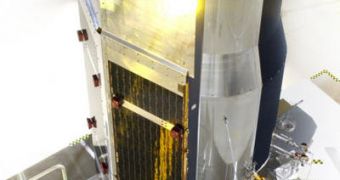It was, indeed, some 400 years ago that astronomer Galileo made some of his first and most important observations of the solar system, identifying other planets and their moons, and making it clear once and for all that the Earth clearly revolved around the Sun, and not the other way around. Now, four centuries later, the world relies on telescopes for much of its knowledge of space, and high-performance observatories have come a long way since the basic, glass construction that Galileo wielded with so much success.
However, the only thing that didn't change at all has been the purpose of these constructions – to make the world beyond the stars visible to the curious minds and eyes. Other than that, pretty much everything has changed, at least technology-wise. While the first-ever telescopes were made of two lenses, one convex and one concave, modern observatories do not even use glass anymore, but rather mirrors, which do not deform when they reach high diameters.
The problem with glass is that it can only be held by its sides, if no flaws are to come to it during cooling. But holding large lenses by the sides makes their middle deform, rendering the mirror useless for any future application. Sir Isaac Newton first revealed the idea of a mirror telescope in the 17th century, and now his has become the standard for modern constructions. Naturally, the mirrors that are available today, constructed by lasers after intricate mathematical algorithms, have nothing to do with those that existed a few centuries ago.
At this point, we as a civilization have something that those who first thought up the idea of a telescope could have never envisioned – observatories that are able to detect wavelengths unseen to the human eye. Among the most impressive such machines, astronomers enumerate the Very Large Array (VLA) (radio), the Very Large Telescope (VLT) (optical), the Hubble Space Telescope (optical), the Chandra X-ray Observatory (X-rays) and the Spitzer Space Telescope (infra-red).
These machines, and many others, have forwarded astronomical knowledge so much, that the volume of things we know about the Universe seems to grow exponentially with each passing year. Once NASA's ARES V project is completed, it will become possible to carry very large telescopes into orbit, capable of twice or more the range of existing orbit-based observatories.

 14 DAY TRIAL //
14 DAY TRIAL //